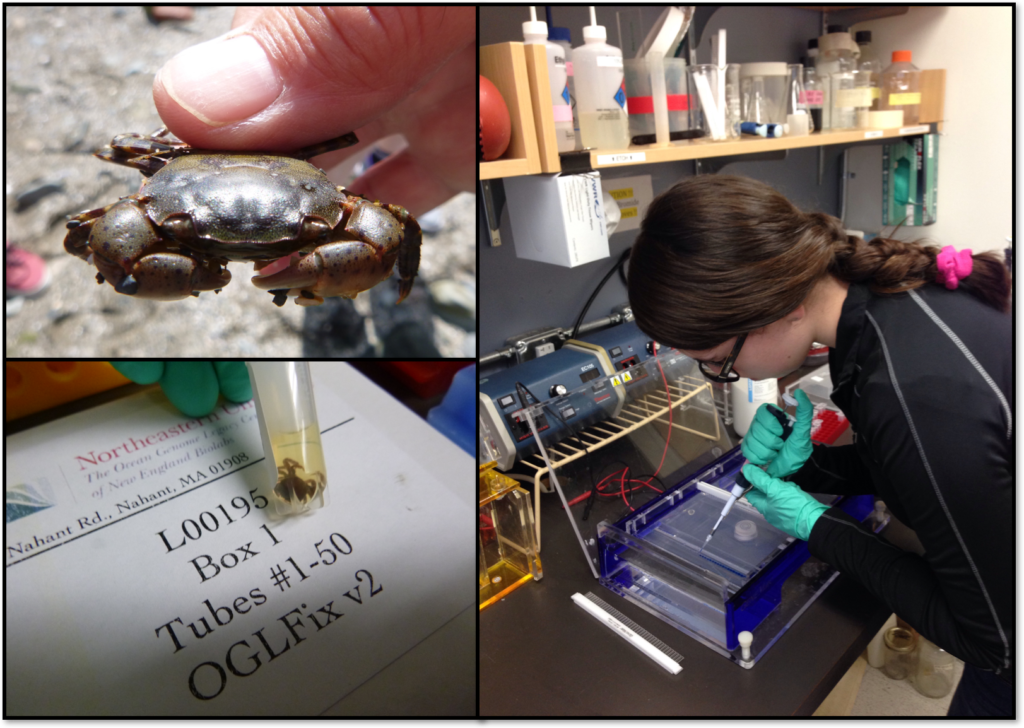Asian shore crabs, a highly invasive species, first appeared on the coast of New Jersey in the late 80s and have since spread up and down the East Coast. This winter, a talented high school student named Margaret “Maggie” Slein and her science teacher, Raymond Whitehouse, came to the Ocean Genome Legacy (OGL) seeking help on a project to understand the spread of this invasive crab in Massachusetts.
Crabs begin their lives as larvae, drifting with currents, spreading from one location to another. As juveniles, they can easily get picked up in the ballast water of large ships only to be released at distant locations. This is how Asian shore crabs, Hemigrapsus sanguineus, most likely made their way from the Pacific to the Atlantic Ocean. Introduced species like this one pose a threat to biodiversity because they may compete with local species for space and food, potentially disturbing the local food webs.

Maggie, a senior at Archbishop Williams High School in Scituate, MA, wanted to find out more about this crab invasion using DNA to investigate the crabs’ genetic variability and potentially discover their place of origin. She collected samples with an OGL kit, then came to OGL to work with the DNA in our genetics laboratory.
Maggie first learned about these invasive crabs during an internship at the New England Aquarium, after which she applied for and won a grant from the Marjot Foundation to study the species. Last week her hard work paid off. Maggie won first place at the Annual South Shore Regional Science Fair, and will go on to compete in the International Science and Engineering Fair in Los Angeles this May.
Please join us in wishing Maggie the best of luck as she competes against some of the top high school scientists in the world!
The OGL biorepository works with researchers, educators, and citizen scientists around the globe to preserve valuable DNA samples and inspire the next generation of ocean stewards. If you would like to support our efforts, please consider making a gift.
